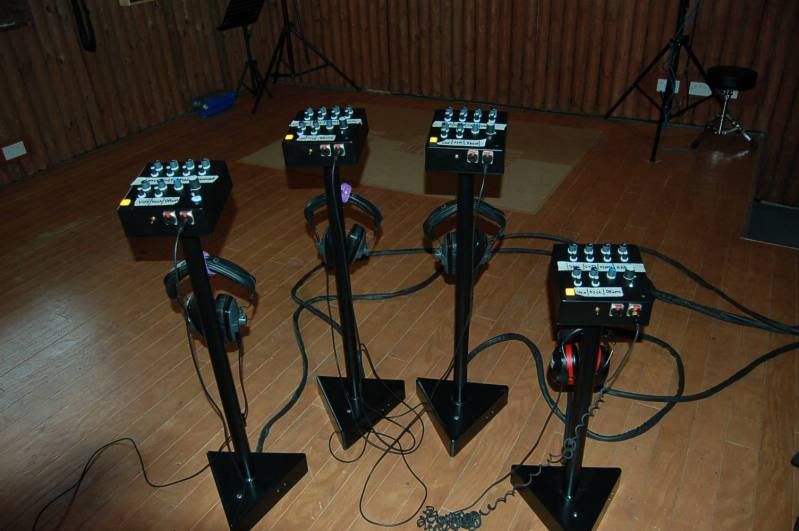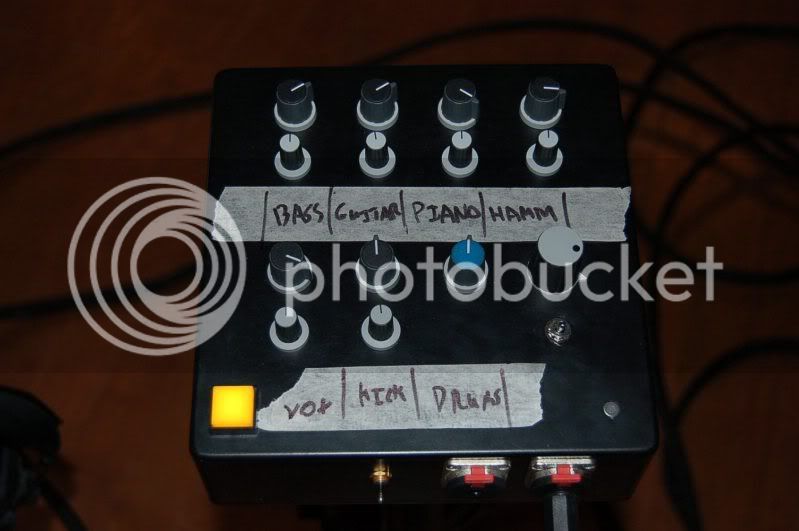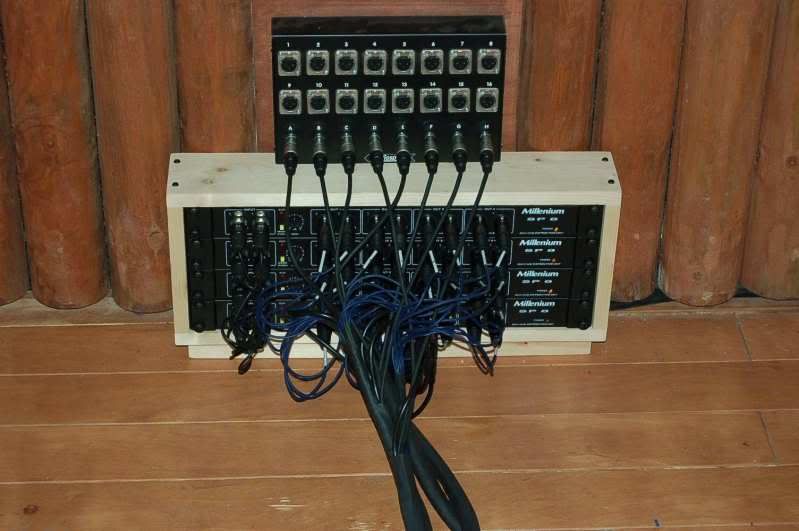IMHO: The "through" jack MUST be a simple wire, NO active parts.
> My idea is to create a "no load" throughput
Sure. But what happens if box B loses power? Boxes C D E... go silent. Much better if only box B goes dead while C D E... keep working.
> My idea is to create a "no load" throughput
What is "NO" load? 10K? 100K? 1Meg? 234Meg? 13 Zillion Gigs?
The real issue is Level Drop. Does the signal get weaker when more guys plug-in?
Nearly any source you are likely to use will be under 2K output impedance. (If it says it can drive 10K, it is surely <2K out.)
A 1dB change of level is nearly inaudible.
A 20K load on a 2K source causes about 1dB level drop (relative to that fictional "no" load).
You got 10 boxes?
Then make each box input over 200K. Ten of those is 20K total. 20K load on 2K source is 1dB drop, nobody notices.
Can your opamp give 200K input? The TL072 is fine with much-much higher resistors (as long as the stage is not too hot to play on); DC error will be small. The bare chip plus short PCB leads is maybe 10pFd stray capacitance, which is like 1Meg impedance at 17KHz.
BUT: the chip input looks like two diodes to the power rails. When a box loses power, that's like two diodes to ground. If signal levels exceed 0.5V, the source is shorted-out, peaks are clipped.
So use two resistors, say 330K+330K, from input jack to ground, with the chip fed from the junction. Keep the resistors very close to the chip.
When happy, the input is 660K which is over 200K. When un-powered, the input changes from 660K for small input to 330K for large input, but that is still over 200K, and (assuming only one unpowered box) much-much larger than the 20K target for "insignificant loading".
This affair causes 2:1 reduction of level, which you can easily make-up in the same stage.
There is still the real problem that a short at any point is dead all over. When the Marshall Stack falls over and the edge pinches your cable, it will crush and short, and may stay shorted even after the Marshall is lifted.
Your plan does have the advantage that if the B-C wire is crush-shorted, at least A and B can continue working. (You do want some hundreds of ohms on the thru-out, so that box B's buffer does not go crazy driving a dead-short, dirtying-up B's sound.)
From a Systems point of view, daisy-chain is good and bad. If the gang is spread-out along a long line, it minimizes wire. However if the B-C wire is bad, D and E etc go dead. You could alternatively build a main Distribution Box, one in, buffer, ten out. Same number of connectors. Single bad wire means only one box out. Wire length may be 50% higher (for simple cases). At stage-size scale, good connectors cost as much as the raw wire, so daisy chain "savings" is small. And the guy on box J may eventually complain that he is at the mercy of ten cables, and ask why you didn't buy enough wire to reach him directly. Of course ten wires at the Dist-Box can be a mess. My uncle can charge you a lot to optimize such problems, if you can quantify the cost of wire and the cost of failure. My gut feeling, for more than 3 and less than 100 boxes, is that a mix of Daisy and Direct may serve best.
If low-value moderate-Watts pots were readily available, you could avoid all those amplifiers. Run two stereo 100W loudspeaker amps with your four signals. The dist-box is forty 100-ohm resistors. Each user-box is a bunch of 100 ohm pots and 100 ohm mix resistors to the cans. Some estimate and trial-n-smoke labor will be needed to bullet-proof the resistor power ratings. The "pan" network might better be a 5-way switch: you don't need precise stereo placement, and dual-100r 2W pots are rare.













![Soldering Iron Kit, 120W LED Digital Advanced Solder Iron Soldering Gun kit, 110V Welding Tools, Smart Temperature Control [356℉-932℉], Extra 5pcs Tips, Auto Sleep, Temp Calibration, Orange](https://m.media-amazon.com/images/I/51sFKu9SdeL._SL500_.jpg)
















